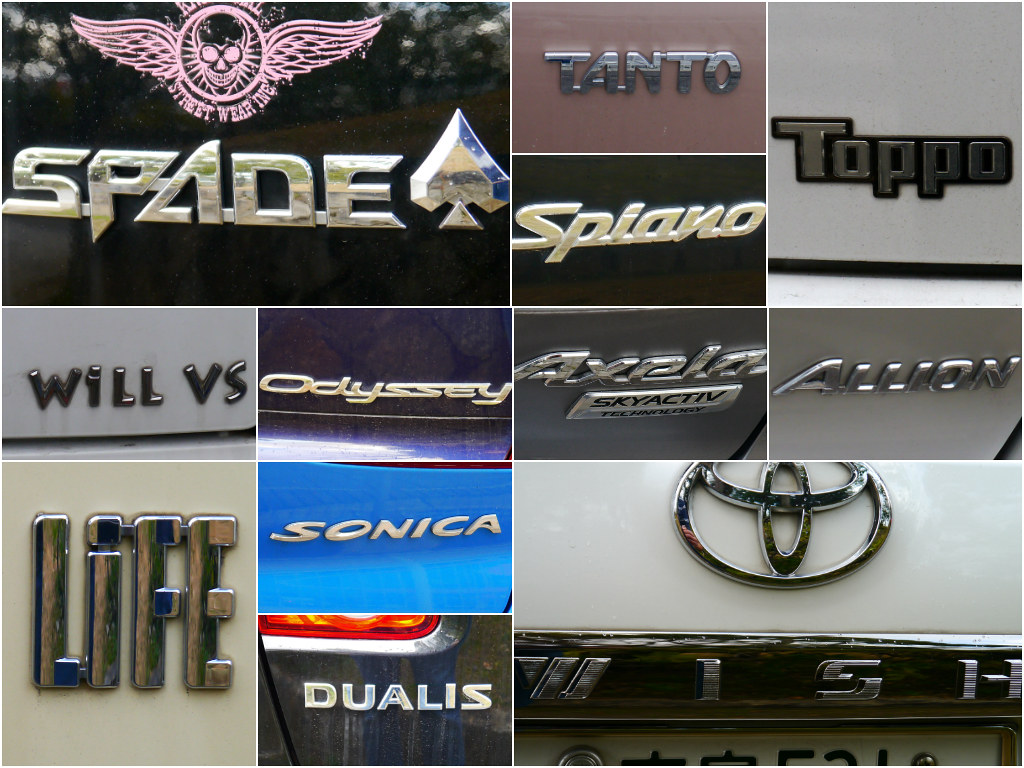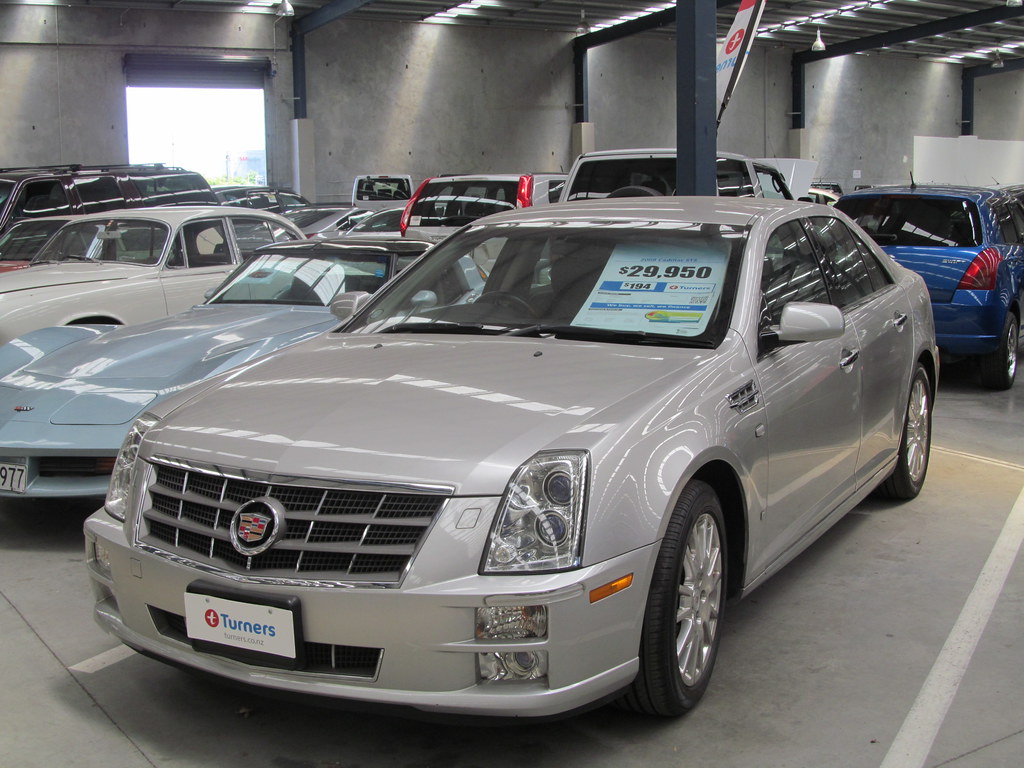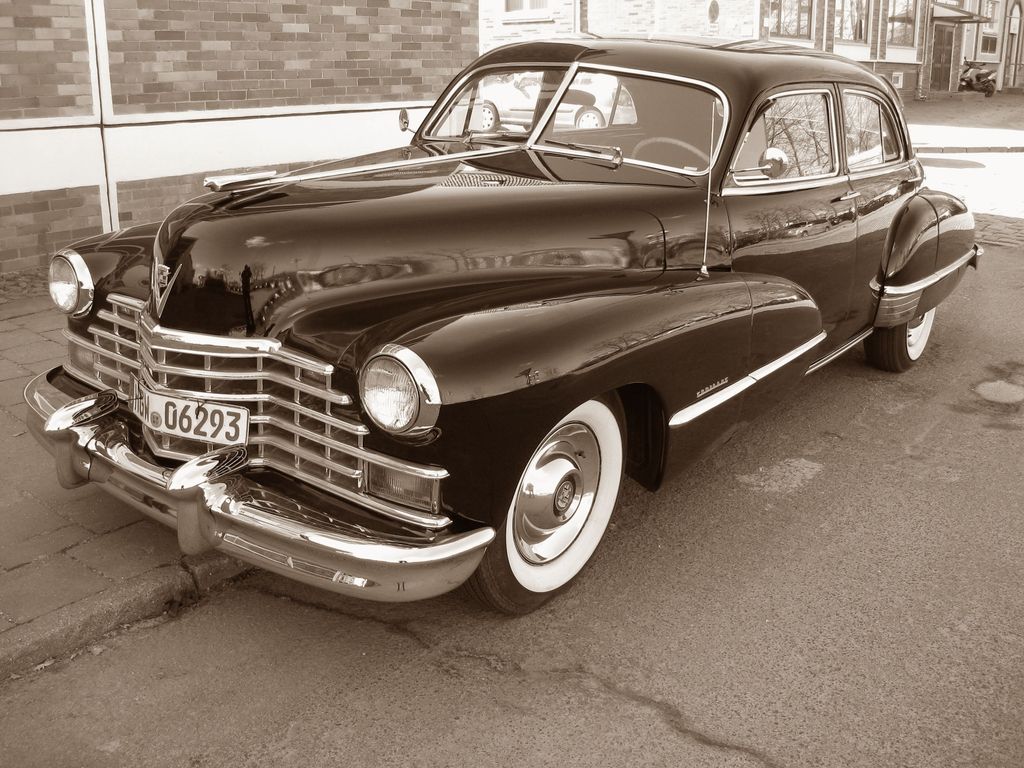Alright, gearheads, let’s get real for a moment. We live in an automotive world that, let’s be honest, is a bit… *conflicted*. On one hand, we’re bombarded with whispers of battery-powered futures, turbocharged small-displacement mills, and crossovers that all seem to blend into one homogenous blob. Yet, peel back that veneer, and you’ll find an undying, visceral hunger for something else: the raw, thunderous symphony of a naturally aspirated V8. The iconic rumble. The unadulterated power.
Indeed, Ford still sells the Mustang, which as of 2025, is the *only* remaining American-made V8-powered RWD factory hot rod. Chevrolet and Ford continue to build V8 powertrains across their respective lineups, and Chrysler is in the process of reviving its famed Hemi V8. This isn’t just nostalgia; it’s a clear signal that the appetite for true American muscle, that distinctive roar that sends shivers down your spine, hasn’t gone anywhere. It simply got a bit… sidetracked.
So, as we stand at this crossroads, a critical question begs an answer: of all the glorious, ground-pounding American muscle cars that have been tragically relegated to the history books, which ones would absolutely, unequivocally, still be massively popular if automakers had the guts to bring them back today? We’re not talking about bland re-badges or soulless electric conversions – we’re talking full-throttle, tire-shredding resurrection. And while our top picks include some non-traditional examples, trust us, you’ll agree they deserve another run at glory.
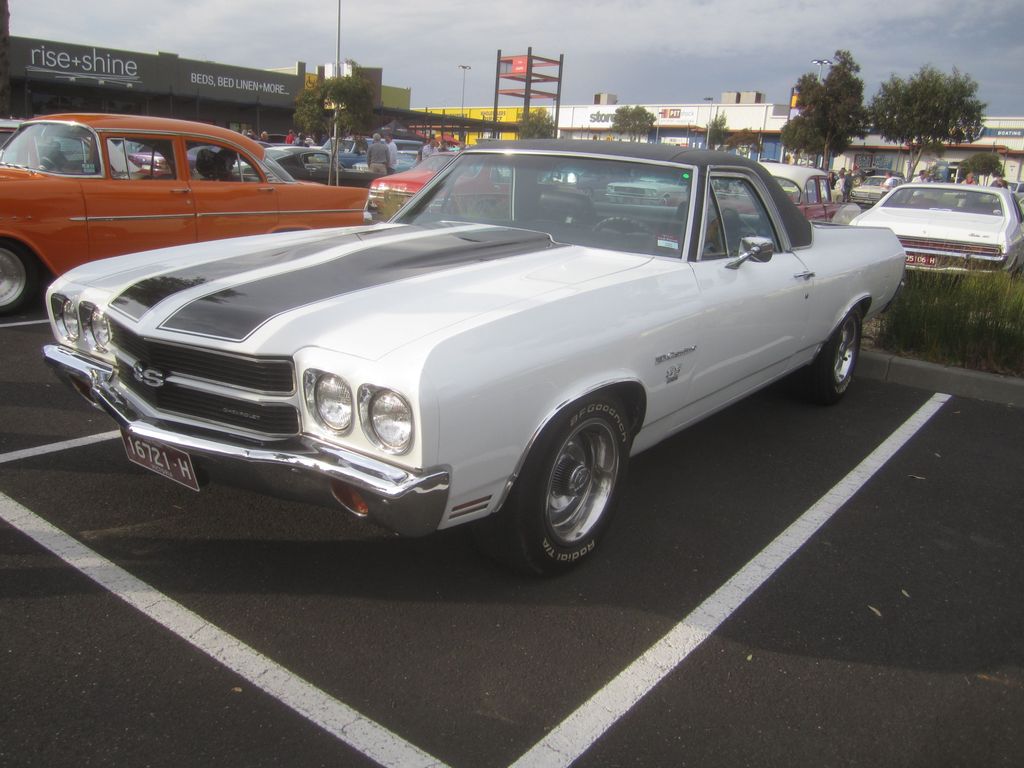
1. **1970 Chevrolet El Camino SS**Let’s kick things off with a vehicle that, frankly, was ahead of its time, then got left behind, and now, more than ever, makes perfect sense. The Chevrolet El Camino. Sure, Chevy discontinued it in 1987, but that was a good three decades after its debut. Over that incredible span, we saw some truly cool variants of this car-like pickup truck, but when we talk serious muscle, the third-gen SS with a monstrous 454 cubic inch LS6 V8 was the undisputed king of the hill.
This beast made a jaw-dropping 450 horsepower. And here’s the kicker – that figure is widely thought to be conservative, meaning it was likely even more potent. The 1970 El Camino SS would have been an absolute terror on the drag strip, no question about it. But what’s even more fascinating is that contemporary marketing showed folks using their El Camino for things like scuba diving, indicating Chevy was inadvertently pioneering the now-ubiquitous adventure lifestyle segment.
Beyond the thundering V8 and the pioneering spirit, the El Camino also boasted trick “air booster” rear dampers. These could be manually inflated to maintain a level ride even when hauling a heavy load – practical muscle, if you will. Stylistically, the El Camino was a clear predecessor to modern compact trucks like the Hyundai Santa Cruz and not too far off the current Ford Maverick. With the small and midsize pickup truck market absolutely booming, a reimagined El Camino would slot right in.
And let’s be honest, the thought of Chevy dropping in the 5.3L or 6.2L V8 from its truck portfolio to create a true, fire-breathing modern-day muscle truck is enough to make any enthusiast salivate. Imagine the practicality, the unique styling, and that unmistakable V8 growl. It’s a combination that today’s market is screaming for, whether they know it or not.
Car Model Information: 2019 Lexus GX 460 Premium
Name: Chevrolet El Camino
Caption: 1969 El Camino SS
Manufacturer: Chevrolet
ModelYears: 1959–1960 ,1964–1987
Layout: Front-engine, rear-wheel-drive layout,rear-wheel drive
Class: Coupé utility,Muscle car
Categories: 1960s cars, 1970s cars, 1980s cars, All articles lacking reliable references, All articles needing additional references
Summary: The Chevrolet El Camino is a coupé utility vehicle that was produced by Chevrolet between 1959–1960 and 1964–1987. Unlike a standard pickup truck, the El Camino was adapted from the standard two-door Chevrolet station wagon platform and integrated the cab and cargo bed into the body.
Introduced in the 1959 model year in response to the success of the Ford Ranchero coupé utility, its first run, based on the Biscayne’s B-body, lasted only two years. Production resumed for the 1964–1977 model years based on the Chevelle platform, and continued for the 1978–1987 model years based on the GM G-body platform.
Although based on corresponding General Motors car lines, the vehicle is classified in the United States as a pickup. GMC’s badge engineered El Camino variant, the Sprint, was introduced for the 1971 model year. Renamed Caballero in 1978, it was also produced through the 1987 model year.
Get more information about: Chevrolet El Camino
Buying a high-performing used car >>>
Brand: Chevrolet Model: El Camino
Price: $30,991 Mileage: 72,932 mi.
Read more about: The 15 Most Iconic Automotive Paint Colors That Defined Eras

2. **1974 AMC Gremlin**Ah, the AMC Gremlin. Legend has it, this car was designed on the back of a barf bag, and it famously launched on April Fool’s Day in 1970. It’s taken a lot of flak over the years, often unfairly. But honestly, there’s a strong, legitimate argument to be made: the Gremlin wasn’t such a bad car after all. In fact, in today’s sea of bland, lookalike crossovers, the quirky Gremlin would be a glorious breath of fresh air.
Particularly, we’re talking about the outrageous Randall 401-XR guise. This wasn’t a factory special, but rather a creation by Randall AMC, a dealership in Arizona that clearly took a page out of Don Yenko’s playbook with his legendary Chevy creations. While the standard Gremlin started with six-cylinder engines, it eventually gained a V8, but the Randall 401-XR elevated it to an entirely different league of performance.
By stuffing a 401 cubic-inch V8 under the hood and offering upgrades to the ignition, camshaft, and rear end, the 401-XR churned out upwards of 255 horsepower. Now, that might not sound like a lot by today’s standards, but let’s put it in context: the car only weighed a featherlight 2,600 pounds, and the most powerful factory setup offered a mere 150 hp. The 401-XR was, by any measure, profoundly impressive and seriously quick.
Picture this: a modern Randall 401-XR. It would be the perfect, utterly riotous foil to something like Toyota’s GR Corolla. This hottest of Gremlins would undoubtedly be equally engaging and hilarious behind the wheel, and it would be pure catnip for today’s gearhead, guaranteed to spark endless discussions and debates. Its audacious styling and no-nonsense performance would be a welcome disruption.
Read more about: 14 Classic Cars That Should Have Been Great (But Horrible Design Flaws Ruined Everything)
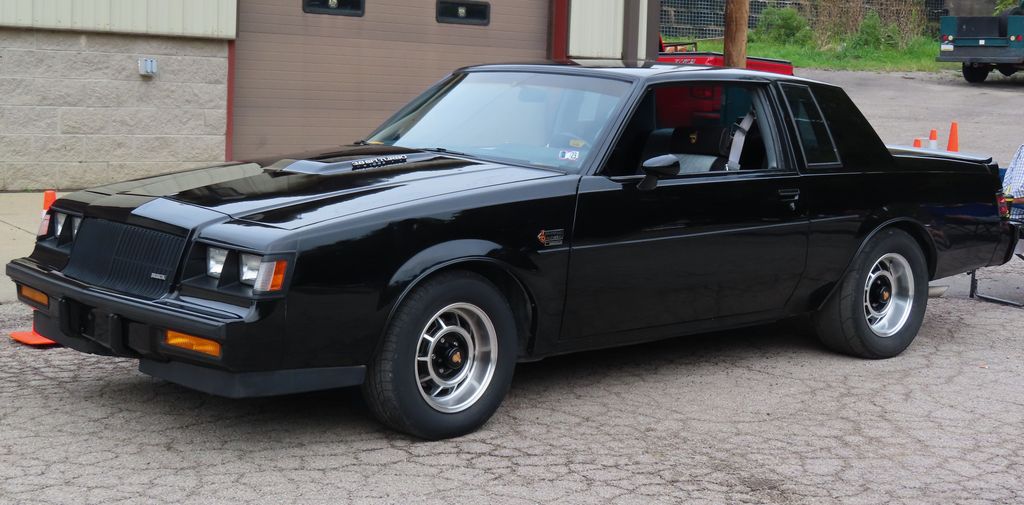
3. **1987 Buick GNX**Okay, let’s get the obvious out of the way: the Buick GNX did not, in fact, have a V8. But to say it wasn’t muscle car royalty is pure blasphemy. This car is widely and rightfully regarded as the final, definitive word on classic American muscle, a true legend that closed out an era. And here’s why it’s a slam-dunk for a modern revival: that turbocharged V6 that powered these factory screamers would be a far easier sell today than a big V8, given current trends.
General Motors has the perfect blueprint to go back to its cross-brand competitive glory days. Think about it: the RWD Cadillac CT5-V is already packing a potent 3.0L twin-turbo V6, cranking out 360 hp and a hefty 405 lb-ft of torque. The original GNX was “only” rated for 276 hp and 360 lb-ft of twist, but independent tests consistently suggested this was a gross understatement, with actual output closer to 300 horsepower and 400 torques. This car was a sleeper of epic proportions.
In any case, the GNX, which proudly stands for Grand National Experimental, would be a seemingly effortless new car for GM to develop, given its deep roster of high-performance powertrains and platforms. The engineering is largely there. The desire, however, needs to be stoked. Would this long-gone muscle car icon still be popular today? Let the market speak.
One of the mere 547 examples ever built recently sold for a cool $230,000 at auction. That’s not just popularity; that’s reverence. Its menacing, black-only appearance would also align perfectly with the wide range of blacked-out packages sold by nearly every automaker in 2025, including the Onyx Package for the CT5-V. A modern GNX wouldn’t just be a car; it would be a statement, a nod to an era of understated dominance.
Read more about: 15 Underappreciated Sedans: Your Expert Guide to Reliable Hidden Gems Delivering Value and Performance
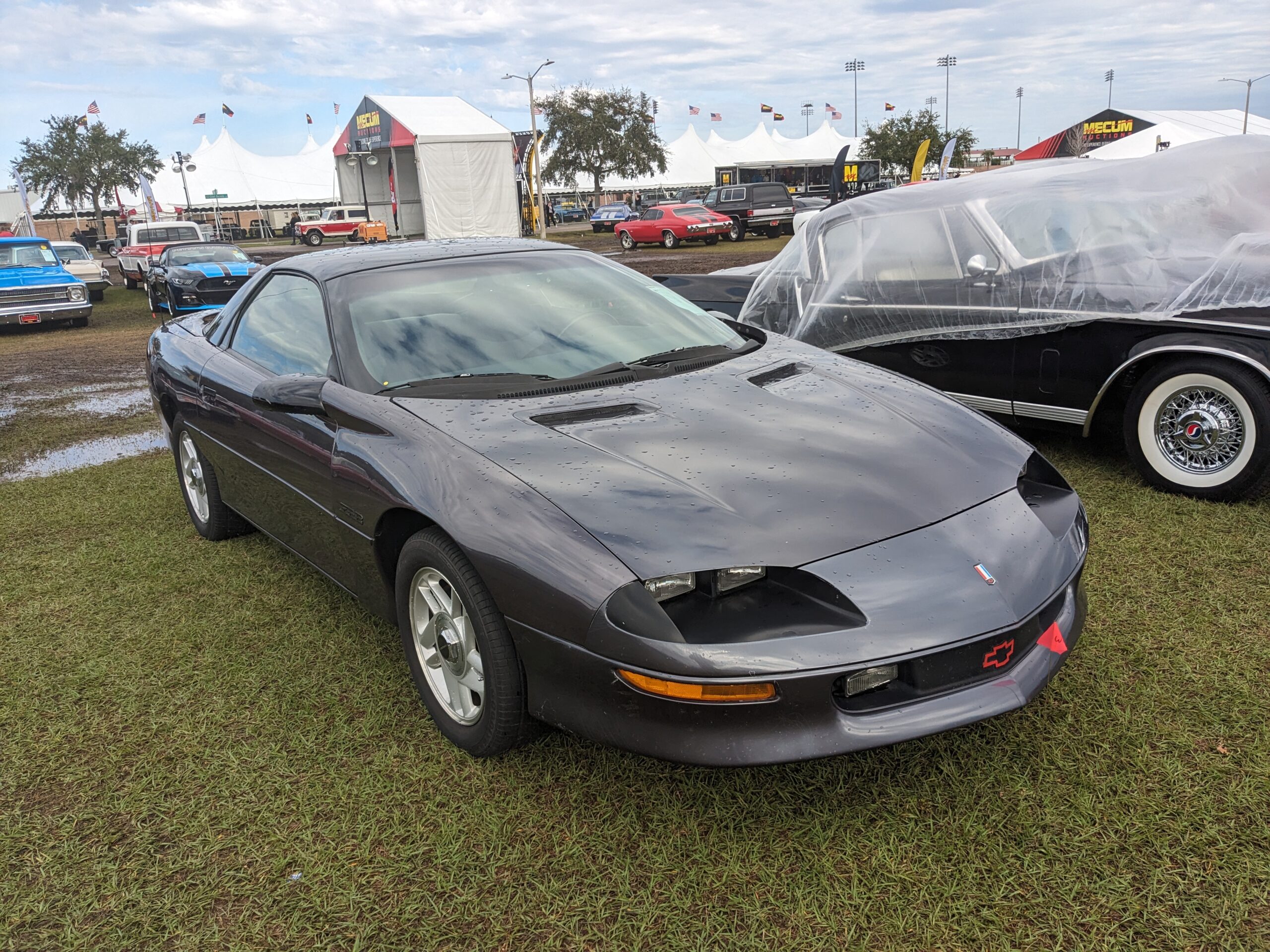
4. **2024 Chevrolet Camaro SS**This one stings a little, doesn’t it? The 2024 Chevrolet Camaro SS, axed in its prime, is an absolute shoo-in for discontinued American muscle cars that would be incredibly popular today. Why? Because the Ford Mustang GT still exists, swaggering around with its naturally aspirated 5.0L V8, delivering 486 hp and 418 lb-ft of torque, a 4.2-second sprint to 60, and a 12.5-second quarter mile at 114 mph.
The Camaro vs. Mustang rivalry isn’t just a friendly competition; it’s the very bedrock of the pony car segment, dating all the way back to the 1960s. It’s genuinely shocking, almost sacrilegious, that Chevrolet would pull the plug on the Camaro when it was still delivering such impressive performance. Before its untimely demise, the 2024 Camaro SS was packing a potent 6.2L V8, putting a robust 455 hp to the rear wheels.
And let’s be clear, this wasn’t just a powerful engine. The Camaro SS was *faster* than the Mustang GT, boasting a 0-60 time of just 3.9 seconds and a 12.2-second quarter mile at 118 mph. It truly brought life and excitement to this tiny, yet fiercely loyal, slice of the domestic automotive pie. Its performance figures were undeniable, and its presence on the road was commanding.
General Motors has been notoriously cagey on the rumors swirling around a potential Camaro return. They haven’t ruled out an electric or even an SUV version, which, let’s be frank, is guaranteed to infuriate the existing fanbase and probably create an entirely new kind of automotive blasphemy. We can only hope the Detroit automaker does the right thing and brings back a *traditional* Mustang fighter, because if they did, it would surely be an instant hot seller and breathe fire back into the segment.
Car Model Information: 2019 Lexus GX 460 Premium
Name: Chevrolet Camaro
Manufacturer: Chevrolet
Production: 1966–2002,2009–2023
ModelYears: 1967–2002,2010–2024
Class: Pony car
BodyStyle: coupe,convertible
Platform: GM F platform,GM Zeta platform,GM Alpha platform
Layout: Front-engine, rear-wheel-drive layout
Categories: 1970s cars, 1980s cars, 1990s cars, 2+2 coupés, 2000s cars
Summary: The Chevrolet Camaro is a mid-size American automobile manufactured by Chevrolet, classified as a pony car. It first went on sale on September 29, 1966, for the 1967 model year and was designed to compete with the Ford Mustang. The Camaro shared its platform and major components with the Firebird, produced by General Motors’ Pontiac division that was also introduced for the 1967 model year.
Four distinct generations of the Camaro were developed before production ended in 2002. The nameplate was revived on a concept car that evolved into the fifth-generation Camaro; production started on March 16, 2009.
Production of the sixth generation of the Camaro ended in December 2023, for the 2024 model year.
Get more information about: Chevrolet Camaro
Buying a high-performing used car >>>
Brand: Chevrolet Model: Camaro SS
Price: $30,991 Mileage: 72,932 mi.
Read more about: Unearthing 15 Unsung 90s Sedans: Reliable Transport Gems for Today’s Commuters
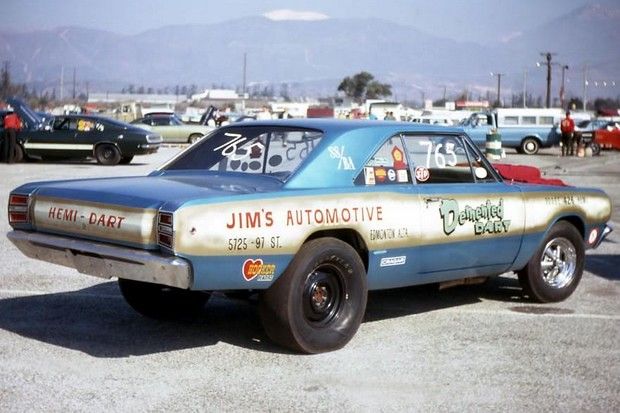
5. **1968 Dodge Dart Hemi**Forget that forgettable, front-wheel-drive Dart compact sedan from 2012. Seriously, erase it from your memory. Instead, cast your mind back to the Dodge Dart of 1960s muscle car glory. Like its modern, unloved namesake, the 1968 Dart was a relatively small car. But as per the glorious norm of the era, its maker saw fit to stuff a wildly overpowered V8 under its hood. And not just any V8, but the legendary, sainted 426 Hemi V8.
In the Dart application, this engine was good for an astonishing 425 horsepower. These weren’t factory mass-produced machines; they were built by Hurst, and only a paltry 80 examples were ever made. The result, however, was absolutely eye-popping. Out of the box, these ultra-rare Darts were capable of tearing down the quarter-mile in the 11-second range at 120 mph.
With just a bit of prep and tuning, these bad boys could even crack into the 10-second and 130-mph ranges. That’s supercar territory, even today! Bringing back a modern Dart, imbued with that original Hemi spirit, would not only help fill out a woefully thin 2025 Dodge portfolio but also give the current crop of high-powered compacts a genuine run for their money in a drag race.
Imagine it going head-to-toe with something like the 11.1-second Hyundai Ioniq 5 N. Sure, the battery-powered Hyundai weighs a chunky 1,829 pounds more than the old Dart Hemi, but it can tap all 568 torques almost instantaneously. Still, the raw, mechanical aggression of a new Dart Hemi, especially with Dodge bringing the Hemi V8 back to life, is an irresistible thought. You truly never know what wonders Mopar might unleash.
Car Model Information: 2015 Dodge Dart SXT
Name: Dodge Dart
Caption: 1966 Dodge Dart GT 2-door hardtop
Manufacturer: Dodge
Production: 1959–1976 (US market)
ModelYears: 1960–1976 (US market)
Class: Full-size
Layout: FR layout
Predecessor: Dodge Coronet#Fourth generation (1957–1959)
Related: Plymouth Valiant,Chrysler Valiant,Dodge Phoenix
Successor: Dodge Aspen,Dodge Diplomat,Talbot Tagora
Categories: 1970s cars, All articles with unsourced statements, Articles with short description, Articles with unsourced statements from December 2023, Articles with unsourced statements from May 2025
Summary: The Dodge Dart is a line of passenger cars produced by Dodge from the 1959 to 1976 model years in North America, with production extended to later years in various other markets.
The production Dodge Dart was introduced as a lower-priced full-size model in 1960 and 1961, but became a mid-size car for one model year for 1962, and was then reduced to a compact for two generations, from 1963 to 1976.
Chrysler had first used ‘Dart’ name plates on two Italian styled show cars, in 1956 and 1957, before it became a Dodge model name. The Dart nameplate was resurrected for a Fiat-derived compact car that was introduced in 2012.
Get more information about: Dodge Dart
Buying a high-performing used car >>>
Brand: Dodge Model: Dart
Price: $9,995 Mileage: 143,082 mi.
Read more about: Beyond the Icons: Unearthing 14 Underappreciated Muscle Cars That Deserve Your Attention
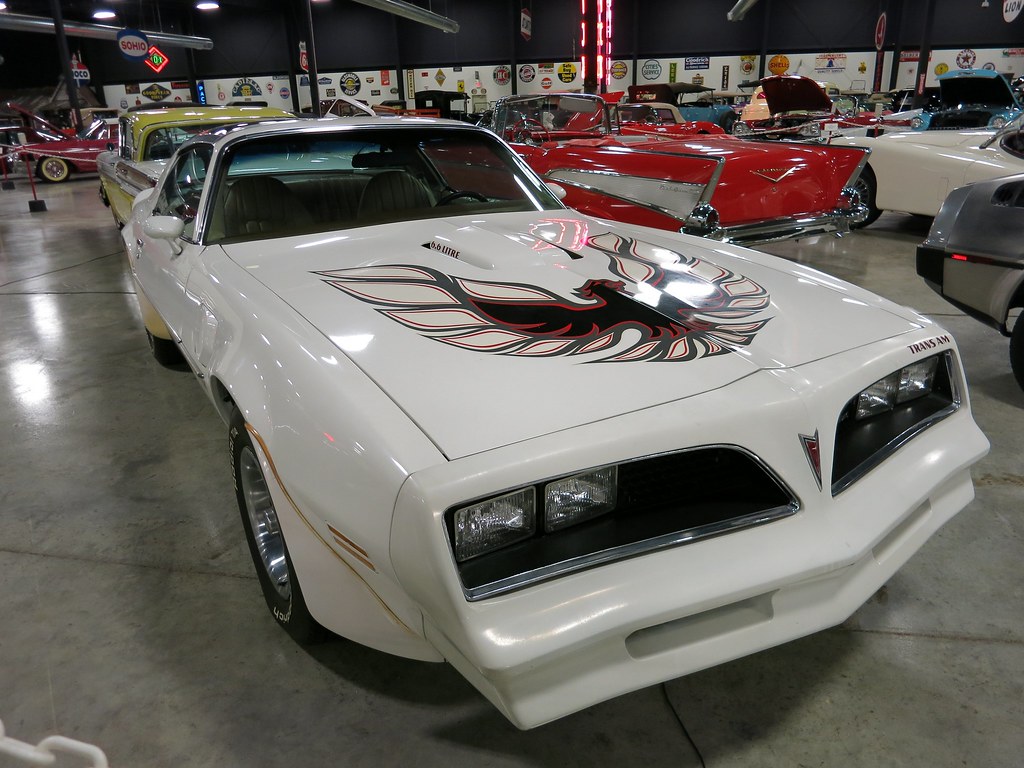
6. **1977 Pontiac Firebird Trans Am**Let’s be brutally honest about the 1977 Pontiac Firebird Trans Am: by that point, the horsepower wars were largely over, and Pontiac itself claimed its Trans Am was only good for 200 horsepower. However, with a generous 6.6 liters of displacement, torque still came in at a respectable 325 lb-ft. Unfortunately, it still required a leisurely 9.3 seconds to hit 60 mph and nearly 17 seconds to run the quarter mile. Not exactly setting the world on fire, numerically speaking.
All that said, these Trans Ams—with their iconic “screaming chicken” hood graphic, the unmistakable gold and black design, and those magnificent snowflake wheels—were, and remain, righteous muscle cars. Perhaps a bit less wild in a straight line than their predecessors, but undeniably cool. And then Burt Reynolds, God rest his soul, hopped into one for “Smokey and the Bandit,” instantly cementing the 1977 Trans Am as a pop culture icon.
To this day, it remains a highly desirable collector car among the enthusiast community, a symbol of an era. Car and Driver recently ran a full-page ad playfully claiming Pontiac was back after being tragically shuttered in 2009. The online response, let me tell you, was nothing short of excited frothing. The passion for the brand, and especially for the Trans Am, is still very much alive.
If pony car fans had their way, and Chevy decided to bring back a traditional Camaro, the return of its Pontiac cousin would be nothing short of epic. It would certainly give Ford some much-needed competition on this front, adding another layer of excitement to the segment. And chances are, a 1977 Firebird Trans Am reboot for 2025 would be quite a bit more potent than its ancestor ever was, bringing genuine muscle back to that iconic bird.
Car Model Information: 2019 Lexus GX 460 Premium
Name: Pontiac Firebird
Caption: The second, third, and fourth generations of,the Pontiac Firebird Trans Am
Manufacturer: Pontiac (automobile)
Production: February 23, 1967 – August 30, 2002
ModelYears: 1967 – 2002
Class: Pony car,Muscle car
Platform: GM F platform
Related: Chevrolet Camaro
Layout: Front engine, rear-wheel-drive layout
Categories: 1970s cars, 1980s cars, 1990s cars, 2000s cars, All articles with dead external links
Summary: The Pontiac Firebird is an American automobile built and produced by Pontiac from the 1967 to 2002 model years. Designed as a pony car to compete with the Ford Mustang, it was introduced on February 23, 1967, five months after GM’s Chevrolet division’s platform-sharing Camaro. This also coincided with the release of the 1967 Mercury Cougar, Ford’s upscale, platform-sharing version of the Mustang.
The name “Firebird” was also previously used by GM for the General Motors Firebird series of concept cars in the 1950s.
Get more information about: Pontiac Firebird
Buying a high-performing used car >>>
Brand: Pontiac Model: Firebird Trans Am
Price: $30,991 Mileage: 72,932 mi.
Read more about: The 15 Most Iconic Automotive Paint Colors That Defined Eras

7. **2006 Dodge Magnum SRT8**Here’s a relatively modern classic that absolutely fits the bill of a discontinued American muscle car—or, shall we say, muscle wagon. Before Dodge inexplicably discontinued the Magnum in 2008, it offered an SRT variant that was nothing short of brilliant. This mean machine packed a naturally aspirated 6.1-liter V8, delivering an impressive 425 horsepower and 420 lb-ft of torque. Enough grunt, certainly, to do the 0-60 run in a very respectable 5.1 seconds.
But the Magnum SRT8 wasn’t just a stoplight racer. It was positioned as a true performance machine, complete with a lowered and sport-tuned suspension and powerful Brembo brakes, ensuring it could handle corners as well as straightaways. Bringing this truly mean wagon back would be an ingenious way to inject some much-needed life and excitement into the Dodge brand, which currently feels a bit… stagnant.
Much like Chevy’s Corvette fearlessly takes on hugely expensive supercars for a fraction of the price, a reborn Magnum SRT8 could offer a fairly priced domestic competitor to high-dollar European performance wagons like the BMW M5 Touring and the Audi RS6 Avant. Both the Audi and BMW start at well over $120,000 and feature twin-turbo V8s making more than 600 horsepower, placing them firmly in the realm of unobtanium for most enthusiasts.
While Stellantis already has a high-output version of its new Hurricane twin-turbo straight-6, good for a potent 540 hp, there clearly remains a strong, undeniable market for powerful V8s. Imagine pricing a new Magnum SRT8 at around $85,000, offering incredible performance and practicality. You’d watch the same customers that appreciate the Corvette absolutely freak out over a hardcore, family-hauling muscle wagon. It’s a niche waiting to be owned, and Dodge could do it best.
Alright, hold onto your lug nuts, because we’re not done delving into automotive awesome. The first seven entries merely scratched the surface; this next batch of discontinued American muscle cars, wagons, and SUVs are just as ripe for a full-throttle comeback. These machines didn’t just move metal; they moved souls. Frankly, we’re tired of them gathering dust when they could be tearing up asphalt right now.
Car Model Information: 1999 Dodge Ram 1500 Van
Name: Dodge Magnum
Caption: 2008 Dodge Magnum SE, Stone White
Production: 1978–1979, 1979–1981,1981–1988, 2005–2008,
ModelYears: 1978–1979,1979–1981,1981–1988,2005–2008
Manufacturer: Chrysler Corporation
Categories: 1980s cars, 2000s cars, All articles with unsourced statements, Articles with short description, Articles with unsourced statements from August 2025
Summary: The Dodge Magnum is a nameplate used by several Dodge vehicles, at different times and on various markets. The name was first applied to a large Chrysler B platform-based 2-door coupe marketed from 1978 to 1979 sold in the United States and Canada. From the 2005 to the 2008 model years, the nameplate was revived for a Charger-based station wagon on the rear-wheel drive Chrysler LX platform, produced in Canada and sold on the American and Canadian market.
In Brazil, the Magnum was a top-of-the-line version of the local Dodge Dart, produced from 1979 to 1981.
In Mexico, the Dodge Magnum was a sporty rear-wheel drive two-door car based on Chrysler’s M-body (American Dodge Diplomat/Plymouth Gran Fury). From 1983 to 1988 Dodge marketed a sporty two-door K-car as the “Magnum”, with an available turbocharger engine from 1984 on.
Get more information about: Dodge Magnum
Buying a high-performing used car >>>
Brand: Dodge Model: Magnum
Price: Not Priced Mileage: 147,110 mi.
Read more about: Remember These Rides? 14 Legendary Cars We’re Seriously Begging Automakers to Bring Back from Retirement

8. **1970 Oldsmobile Vista Cruiser 455**Here’s some crazy car info: the 1970 Oldsmobile Vista Cruiser, typically a family hauler, was available with a monstrous 455 cubic inch V8. This wasn’t watered-down; it boasted a staggering 390 horsepower and 500 lb-ft of torque. Capable of seating nine, it hit 0-60 in 6.2 seconds and 127 mph. Without a doubt, one of the strangest yet coolest muscle cars ever produced.
Beyond its power-to-people ratio, the Vista Cruiser was packed with practicality. Its tailgate folded, allowing cargo up to 10 feet long. And well before panoramic moonroofs became trendy, these Olds wagons boasted large glass panels across and down the roof. No wonder it was called the Vista Cruiser; the views were truly panoramic.
Wagons have largely fallen out of favor, yet luxury brands and even Subaru continue offering compelling variants. In today’s SUV-crazed landscape, only big Chevy SUVs seat nine, but a reborn Vista Cruiser would offer a distinctive alternative. Imagine GM unleashing a modern version, blending iconic panoramic glass with a powerful V8. It wouldn’t just be an SUV alternative; it would be a statement of family practicality meeting unadulterated muscle, a niche truly awaiting reignition.
Car Model Information: 2019 Lexus GX 460 Premium
Name: Oldsmobile Vista Cruiser
Layout: FR layout
Manufacturer: Oldsmobile
ModelYears: 1964–1977
Related: Chevrolet Chevelle,Pontiac Tempest#Second generation (1964–1967),Buick Sport Wagon
Caption: 1966 Oldsmobile Vista Cruiser
Class: Mid-size
Chassis: body on frame
BodyStyle: Station Wagon
Successor: Oldsmobile Cutlass Supreme#Fourth generation (1978–1988)
Platform: GM A platform (RWD)
Categories: 1960s cars, 1970s cars, Articles with short description, Cars discontinued in 1977, Cars introduced in 1964
Summary: The Oldsmobile Vista Cruiser is a station wagon manufactured and marketed by Oldsmobile over three generations from 1964 to 1977.
The first and second generation Vista Cruisers are noted for their fixed-glass, roof-mounted skylights over the second-row seating with sun visors for the second row passengers, a raised roof behind the skylight and lateral glass panels over the rear cargo area along the raised roof, and access to the third row of forward-facing passenger seating was accomplished by a second row split bench seat that retracted forward.
Sharing its bodystyle with the Buick Sport Wagon, Pontiac Tempest Safari and Chevrolet Chevelle Greenbrier, the Vista Cruiser was introduced on February 4, 1964, as a 1964 model, based on the Oldsmobile Cutlass/F-85 Series. The skylight roof panel was only shared with the Buick Sport Wagon and was not available on the Chevrolet Chevelle or Pontiac Tempest station wagons. Prior to the 1973 model year the Vista Cruiser utilized a wheelbase which was 5 inches (127 mm) longer than that of the Cutlass/F-85 sedan.
Subsequent Oldsmobile mid-size wagons featured a skylight as did the 1991–92 full-size Oldsmobile Custom Cruiser wagon and the 1991–96 Buick Roadmaster Estate.
Reminiscent of earlier models, the third generation Vista Cruiser (1973–1977) featured optional rear-facing third row seating, while incorporating a single flat venting moonroof over the front row seating.
Get more information about: Oldsmobile Vista Cruiser
Buying a high-performing used car >>>
Brand: Oldsmobile Model: Vista Cruiser
Price: $30,991 Mileage: 72,932 mi.
Read more about: Under the Hood: Unmasking 7 Overrated American Cars and Celebrating 7 Overlooked Gems That Deserve Your Attention
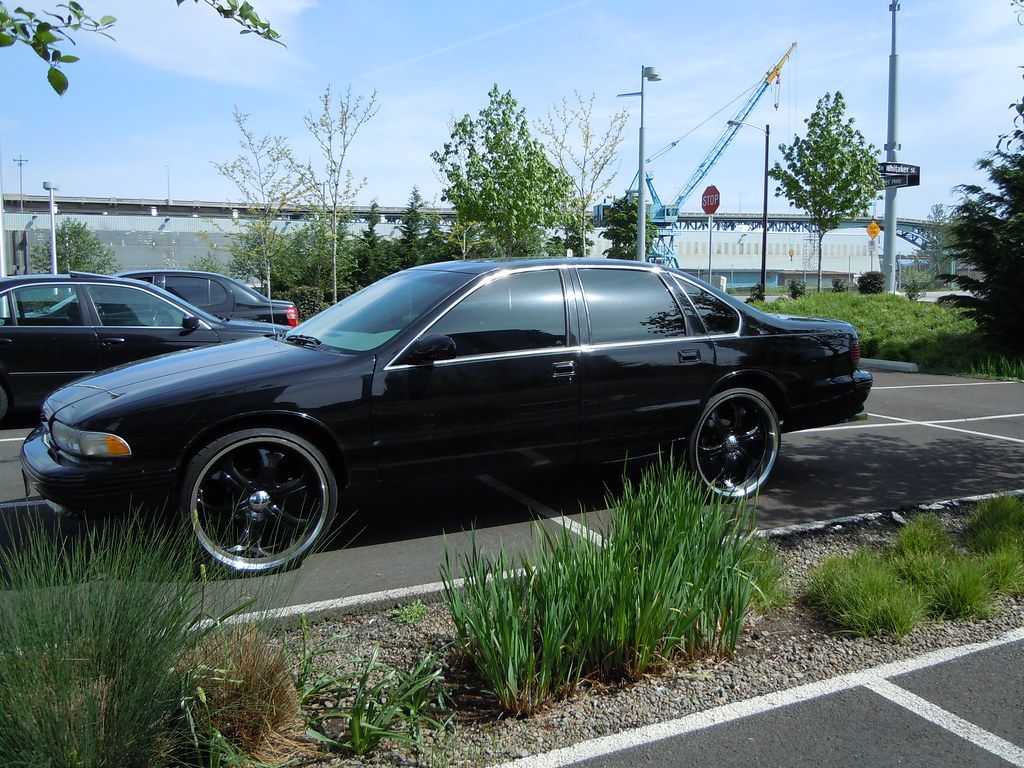
9. **1995 Chevrolet Impala SS**The Chevrolet Impala is an automotive icon with roots stretching all the way back to the fabulous 1950s, producing countless excellent variants before its final retirement in 2020. But among all the muscle-bound Impalas throughout history, the rare 1995 Impala SS absolutely jumps out as a discontinued American muscle car that would be massively popular if Chevy had the vision to bring it back to life today. At the time of its original debut, the Bowtie brand’s lineup surprisingly lacked an Impala, so Chevrolet did what any self-respecting muscle car builder would do: they dropped a big V8 into an otherwise unassuming car – in this case, the Caprice – to forge something far more exciting and sinister.
Underneath that unassuming exterior lay a heart of pure performance: the 5.7-liter LT1 mill, a direct transplant from the period Corvette. This potent V8 unleashed a solid 260 horsepower and a beefy 339 lb-ft of torque. Power, as any purist would demand, was sent exclusively to the rear wheels through a limited-slip differential. The handling wasn’t an afterthought either; a sport-tuned suspension featuring de Carbon shocks and sticky BF Goodrich Comp T/A tires ensured this land yacht could actually carve corners with surprising composure. It was a sleeper of the highest order, blending executive sedan looks with genuine performance chops.
Now, let’s fast forward to today. Imagine bringing that legendary formula back, but this time, with the ferocious 6.2-liter V8 ripped straight from the 2025 Corvette Stingray. Chevrolet could even skip the more extreme Z06 engine to keep costs down, perfectly adhering to the original ethos of sleeper-like menace. This would truly offer an ‘Audi S8 fighter on the cheap,’ but with undeniable American muscle swagger, making throngs of stunned fans flock to dealerships for a defiant, powerful statement that the art of the traditional, fire-breathing sedan is far from dead.
Car Model Information: 1963 Chevrolet Impala Base
Name: Chevrolet Impala
Caption: Fourth-generation model (1967)
Manufacturer: Chevrolet
Production: 1957–1985,1994–1996,1999–2020
ModelYears: 1958–1985,1994–1996,2000–2020
Predecessor: Chevrolet Bel Air,Chevrolet Lumina#Second generation (1995–2001)
Successor: Chevrolet SS,Chevrolet Caprice
Platform: GM B platform,GM W platform,GM W platform (GMX211) (2005–2013),GM Epsilon platform#Epsilon II
Class: Full-size car,Mid-size car
Layout: Front-engine, rear-wheel-drive layout,Front-engine, front-wheel-drive layout
Categories: 1960s cars, 1970s cars, 1980s cars, 1990s cars, 2000s cars
Summary: The Chevrolet Impala () is a full-size car that was built by Chevrolet for model years 1958 to 1985, 1994 to 1996, and 2000 to 2020. The Impala was Chevrolet’s popular flagship passenger car and was among the better-selling American-made automobiles in the United States.
For its debut in 1958, the Impala was distinguished from other models by its symmetrical triple taillights. The Chevrolet Caprice was introduced as a top-line Impala Sport Sedan for model year 1965, later becoming a separate series positioned above the Impala in 1966, which, in turn, remained above the Chevrolet Bel Air and the Chevrolet Biscayne. The Impala continued as Chevrolet’s most popular full-sized model through the mid-1980s. Between 1994 and 1996, the Impala was revised as a 5.7-liter V8–powered version of the Chevrolet Caprice Classic sedan.
In 2000, the Impala was reintroduced again as a mainstream front-wheel drive car. In February 2014, the 2014 Impala ranked No. 1 among Affordable Large Cars in U.S. News & World Report’s rankings. When the 10th generation of the Impala was introduced for the 2014 model year, the 9th generation was rebadged as the Impala Limited and sold only to fleet customers through 2016. During that time, both versions were sold in the United States and Canada. The 10th-generation Impala was also sold in the Middle East and South Korea.
Get more information about: Chevrolet Impala
Buying a high-performing used car >>>
Brand: Chevrolet Model: Impala
Price: $89,991 Mileage: 15,837 mi.
Read more about: Unearthing 15 Unsung 90s Sedans: Reliable Transport Gems for Today’s Commuters
10. **1992 Dodge Viper**By the time Dodge finally retired the Viper in 2017, it had evolved into a legitimate, world-class supercar, capable of challenging the very best from Europe. However, it’s the features – or rather, the *lack* thereof – in the first-generation Viper that truly cemented its place more firmly in the raw, unadulterated muscle car bucket. This was 1992, and Dodge unleashed a Viper that felt less like a meticulously engineered OEM-quality car and more like a barely street-legal, garage-built hotrod. Think about it: the plastic windows were zippered in, there were no exterior door handles, and glaringly absent were modern amenities like air conditioning, cup holders, and, perhaps most shockingly, airbags. It was utterly Spartan, deliberately so.
But what the original Viper *did* have, in spades, was an engine that redefined excess: a gargantuan 8.0-liter pushrod V10. This behemoth of an engine churned out a staggering 400 horsepower and a pavement-rippling 465 lb-ft of torque. Despite its imposing size, the curb weight measured a surprisingly lean 3,500 pounds, allowing this brute to rocket to 60 mph in a blistering 4.3 seconds. Flat out, it could hit a wind-in-your-hair (or on your face, since the top was almost always down) 168 mph. And if that wasn’t enough to scream “muscle car purist,” the wickedly hot side exhaust pipes were one more gloriously unsubtle nod to its no-compromise philosophy.
Today, Chevrolet’s Corvette is the sole domestic supercar. Were Dodge to revive the Viper, it would inject much-needed excitement into the brand’s stagnant lineup and offer American muscle car aficionados a compelling alternative to the Corvette. A modern Viper, meeting contemporary standards, could retain its raw, visceral spirit, focusing on unadulterated power and driver engagement. It would be a pure, uncompromised American supercar, a middle finger to automotive homogenization, and a glorious return for a legend.
Car Model Information: 2017 Dodge Viper GTC
Name: Dodge Viper
Caption: 2013 SRT Viper GTS Launch Edition
Manufacturer: Dodge
Production: 1991–2006,2007–2017
Assembly: Detroit,Michigan
Class: Sports car
BodyStyle: liftback,coupe
Layout: Longitudinal engine,Front mid-engine, rear-wheel drive layout
Engine: Viper engine,{{convert,488,cuin,L,abbr=on,1,order=flip,lk=on
Abbr: on
Order: flip
Powerout: SR-I and II:,{{convert,400,hp,PS kW,0,abbr=on,lk=on
Lk: on
ModelYears: 1992–2006,2008–2017
Categories: 1990s cars, 2000s cars, 2010s cars, All accuracy disputes, All articles with unsourced statements
Summary: The Dodge Viper is a sports car that was manufactured by Dodge (by SRT for 2013 and 2014), a division of American car manufacturer Chrysler from 1992 until 2017, having taken a brief hiatus in 2007 and from 2011 to 2012. Production of the two-seat sports car began at New Mack Assembly Plant in 1991 and moved to Conner Avenue Assembly Plant in October 1995.
Although Chrysler considered ending production because of serious financial problems, on September 14, 2010, then–chief executive Sergio Marchionne announced and previewed a new model of the Viper for 2012. In 2014, the Viper was named number 10 on the “Most American Cars” list, meaning 75% or more of its parts are manufactured in the U.S. The Viper was eventually discontinued in 2017 after approximately 32,000 were produced over the 26 years of production.
The 0–60 mph (97 km/h) time on a Viper varies from around 3.5 to 4.5 seconds. Top speed ranges from 160 mph (260 km/h) to over 200 mph (320 km/h), depending on variant and year.
Get more information about: Dodge Viper
Buying a high-performing used car >>>
Brand: Dodge Model: Viper
Price: $275,000 Mileage: 13,105 mi.
Read more about: Remember the ’00s? These 13 V10 Engines Were the Absolute Rulers of Sound and the Motorsport Circuit.

11. **2009 Cadillac STS-V**Alright, let’s concede that the 2009 Cadillac STS-V might stretch the traditional definition of a pure muscle car, leaning more into the “luxury performance sedan” territory. However, make no mistake, this beast definitely boasts one of the most powerful V8s ever fitted to a Cadillac, maintained its essential RWD configuration, and was undeniably a high-performance machine. Specifically, tucked under its hood was a supercharged 4.4L Northstar V8, which unleashed a formidable 469 horsepower and a hefty 439 lb-ft of torque – with the latter figure incredibly available at just 2,200 rpm, meaning instant grunt whenever you flexed your right foot.
The STS-V wasn’t just about the engine; it received a comprehensive suite of upgrades over the base STS to elevate its performance pedigree. These included distinctive staggered 18-inch and 19-inch wheels, reinforced front and rear cradles for enhanced structural rigidity, and stiffer springs to sharpen its handling. Thanks in part to the supercharger’s impressive 12 psi of boost, this luxury muscle sedan could dispatch the 0-60 mph sprint in a swift 4.9 seconds and effortlessly cruise to a top speed of 165 mph. This was a Caddy that could, and would, hustle.
Looking at today’s landscape, a modern STS-V would be incredibly popular, similar to the 2025 Mercedes-AMG E53. A new STS-V could slot above the CT5-V, fleshing out Cadillac’s performance offerings. Equipping it with the 655-horsepower hybridized V8 from the Corvette E-Ray would allow it to go toe-to-toe with German hot rods. Applying the wild Blackwing treatment would create one of the most enticing luxury muscle cars, blending opulence with earth-shattering performance.
Car Model Information: 2008 Cadillac CTS Base
Name: Cadillac STS
Manufacturer: General Motors,Shanghai GM
Aka: Cadillac SLS (China)
Production: 2004–2011,2006–2013 (China)
ModelYears: 2005–2011,2007–2013 (China)
Predecessor: Cadillac Seville
Successor: Cadillac XTS
Class: Mid-size,luxury car
BodyStyle: sedan (car)
Platform: GM Sigma platform
Layout: Front-engine, rear-wheel drive layout
Related: Cadillac CTS,Cadillac SRX
Wheelbase: 116.4 in
Abbr: convert
Engine: GM Ecotec engine#LDK,Inline 4
Transmission: GM 5L40-E transmission,GM 5L40-E transmission#5L50,GM 6L50 transmission,GM 6L50 transmission
Length: 196.3 in
Width: 72.6 in
Height: 57.6 in
Weight: 3922 lb
Assembly: Lansing, Michigan
Designer: James C. Shyr
Categories: 2010s cars, All-wheel-drive vehicles, All articles with dead external links, Articles with dead external links from June 2014, Articles with short description
Summary: The Cadillac STS (an initialism of Seville Touring Sedan) is a mid-sized luxury 4-door sedan manufactured and marketed by General Motors from 2004 to 2011 for the 2005 to 2011 model years. A version of the STS was marketed in China as the SLS through 2013.
It was equipped with a six-speed automatic transmission with performance algorithm shifting and driver shift control.
Get more information about: Cadillac STS
Buying a high-performing used car >>>
Brand: Cadillac Model: STS-V
Price: $7,000 Mileage: 108,798 mi.
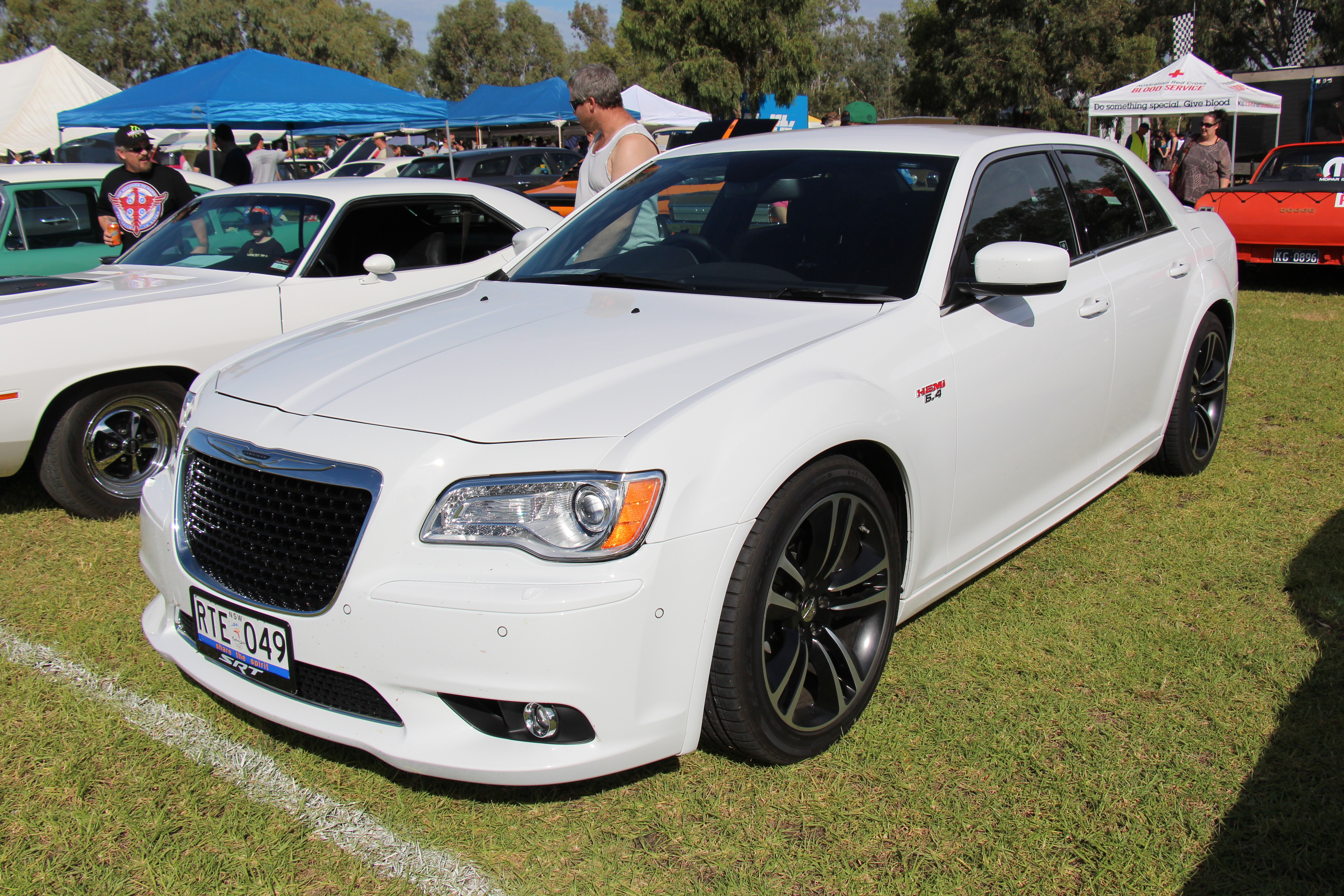
12. **2012 Chrysler 300C SRT-8**Chrysler’s late, great 300C SRT-8 is another phenomenal example of a discontinued American muscle car that, to the untrained eye, appeared to be simply an elegant, full-size sedan. However, those in the know, the true car nerds among us, understood this 300C to be nothing less than a wolf in sheep’s clothing. Powering this discreet powerhouse was a naturally aspirated 6.4L Hemi V8, churning out a very healthy 470 horsepower and an equally stout 470 lb-ft of torque. This wasn’t just a powerful car; it was an absolute rocket, capable of launching from 0-60 mph in a breathtaking 4.3 seconds and surging all the way up to a top speed of 175 mph.
Perhaps one of the most impressive aspects of the 300C SRT-8 was its sticker price: roughly $48,000. That, folks, was an absolute bargain, especially when compared to a period BMW M5, which commanded a staggering $94,000 price point. And the 300C SRT-8 was far more than just a big motor. It came loaded with genuine performance upgrades, including adaptive dampers for a composed ride and sharp handling, aggressively bolstered front sport seats to keep you firmly planted, and fat 20-inch rubber for maximum grip. The luxury quotient was also ample, with available heated and cooled seats, sumptuous Nappa leather, and a premium Harman Kardon audio system, making it a truly well-rounded package.
Chrysler’s current portfolio holds just one vehicle, a disheartening situation for fans. However, a modern 300C, honoring the SRT-8’s spirit, would be irresistible. Imagine it with the potent 540-horsepower Hurricane powertrain – a full-blown muscle car blending iconic aesthetic with exhilarating modern performance. The 300C SRT-8 proved its understated aggression and performance-per-dollar ratio would find a huge audience today, re-establishing Chrysler as a serious contender in performance sedans.
Car Model Information: 2019 Lexus GX 460 Premium
Name: Chrysler 300
Aka: Lancia Thema
Manufacturer: Chrysler (automotive brand)
Production: February 1, 2004– December 2023
ModelYears: 2005–2023
Class: Executive car
Layout: Front-engine, rear-wheel-drive layout,automobile layout
Predecessor: Chrysler 300M,Chrysler Concorde,Chrysler Intrepid
Categories: 2010s cars, All articles with dead external links, All articles with unsourced statements, Articles with dead external links from June 2025, Articles with short description
Summary: The Chrysler 300 is a full-size car produced by Chrysler under Stellantis North America and its predecessors. The first generation (model years 2005–2010) was availabe as a four-door sedan and station wagon, in the second generation (model years 2011–2023) was available soley as a sedan.
The second generation 300 was marketed as the Chrysler 300C in the United Kingdom and Ireland and as the Lancia Thema in the remainder of Europe.
Get more information about: Chrysler 300
Buying a high-performing used car >>>
Brand: Chrysler Model: 300C SRT-8
Price: $30,991 Mileage: 72,932 mi.
Read more about: The 13 Worst-Performing Cars in Their Segment: A MotorTrend Deep Dive into Automotive Disappointments
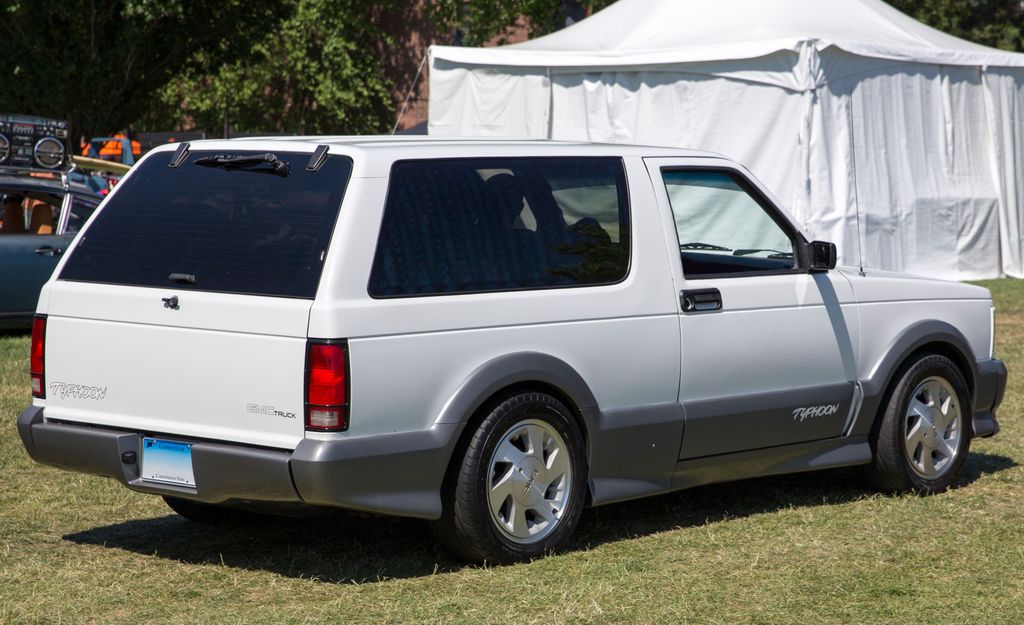
13. **1992 GMC Typhoon**Okay, we’re going to bend the rules a little, but trust us, it’s for a truly righteous cause. The legendary GMC Typhoon is, admittedly, no car. But it is, without a shadow of a doubt, a muscle-bound SUV that would fit in absolutely perfectly among today’s crossover-heavy automotive lineups. And much like the beloved Buick GNX, it went the turbocharged V6 route, which actually might be an easier sell today over a big, thirstier V8, given current market trends. Though, let’s be honest, GM’s potent 5.3L V8 would be a seemingly obvious and thoroughly welcome choice for a reborn Typhoon, too.
This compact powerhouse was considered the very first high-performance SUV, and in 1992, the Typhoon was also one of the fastest accelerating vehicles of *any* variety in the entire world at the time. We’re talking about a vehicle that was showing its taillights to big-buck exotica like the Ferrari 348 TS, all while costing less than one-third of the price! This small GMC was radically ahead of its time, demonstrating that utility didn’t have to come at the expense of mind-bending speed.
A 2025 GMC Typhoon could absolutely take on expensive performance crossovers like the Porsche Macan GTS and Audi SQ5, but at a more accessible price. It could slot below the Terrain, perhaps with refreshed ’90s decals. A modern Typhoon wouldn’t just be an SUV; it would be a practical, incredibly fast, uniquely styled machine that pays homage to a legend while embracing modern performance. This isn’t just a comeback; it’s a redefinition of what a performance SUV can and should be.
Car Model Information: 1992 GMC Jimmy Typhoon
Name: GMC Typhoon
Production: 1992–1993,4697 produced
Manufacturer: GMC (marque)
Class: Mid-size car,Sport utility vehicle
BodyStyle: Sport utility vehicle
Related: GMC Syclone,GMC Jimmy
Engine: Chevrolet 90° V6 engine#Turbocharged LB4 4.3L V6
Transmission: Turbo-Hydramatic#THM700R4 / 4L60 / 4L60E / 4L65E / 4L70E,automatic transmission
Wheelbase: 100.5 in (2553 mm)
Length: 170.3 in (4326 mm)
Width: 68.2 in (1732 mm)
Height: 60.0 in (1524 mm)
Weight: 3822 lb (1734 kg)
Layout: Front-engine, four-wheel-drive layout
Categories: Articles with short description, Cars introduced in 1991, Commons category link is on Wikidata, GMC vehicles, Mid-size sport utility vehicles
Summary: The GMC Typhoon is a high-performance SUV, produced from 1992 until 1993 by GMC. The Typhoon was based on the 1991 GMC Syclone.
Get more information about: GMC Typhoon
Buying a high-performing used car >>>
Brand: GMC Model: Typhoon
Price: $41,800 Mileage: 40,357 mi.
Read more about: The Secret Lives of the Super-Rich: 15 Simple Cars Driven by 12 Famous Billionaires
And there you have it, folks – a deep dive into 13 incredible, ground-pounding American muscle cars (and a few powerful exceptions) that automakers, bafflingly, aren’t building anymore. From classic terrors to sophisticated sleepers and pioneering performance utilities, each machine represents a golden opportunity. Not just to revisit a glorious past, but to inject raw excitement, unique character, and genuine heritage back into today’s often-homogenized automotive landscape. The appetite for that distinctive rumble and American swagger hasn’t gone anywhere. It’s time for these legends to rise again, not as relics, but as powerful, relevant contenders in a market hungry for their return. Let’s hope Detroit is listening, because the road is calling for these thunderous comebacks!

